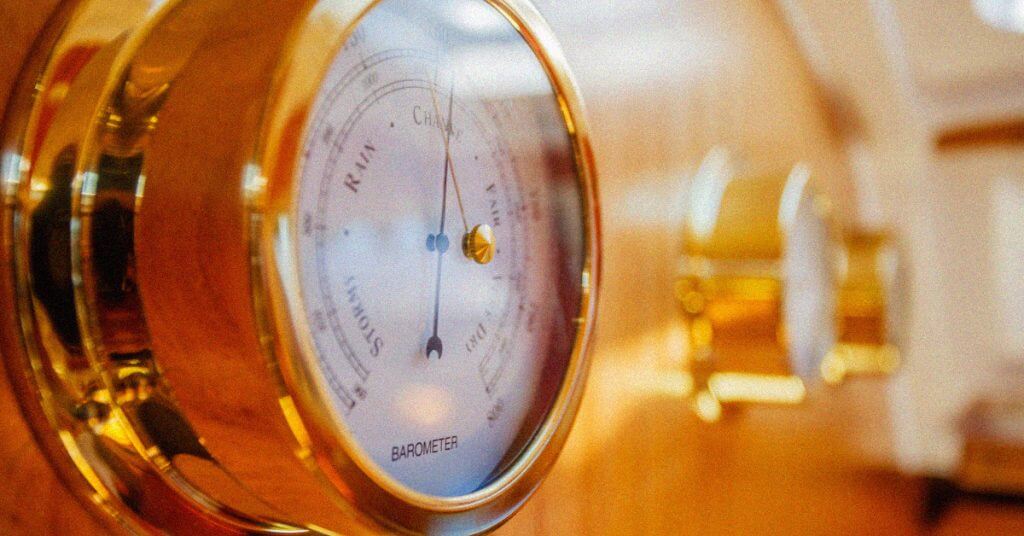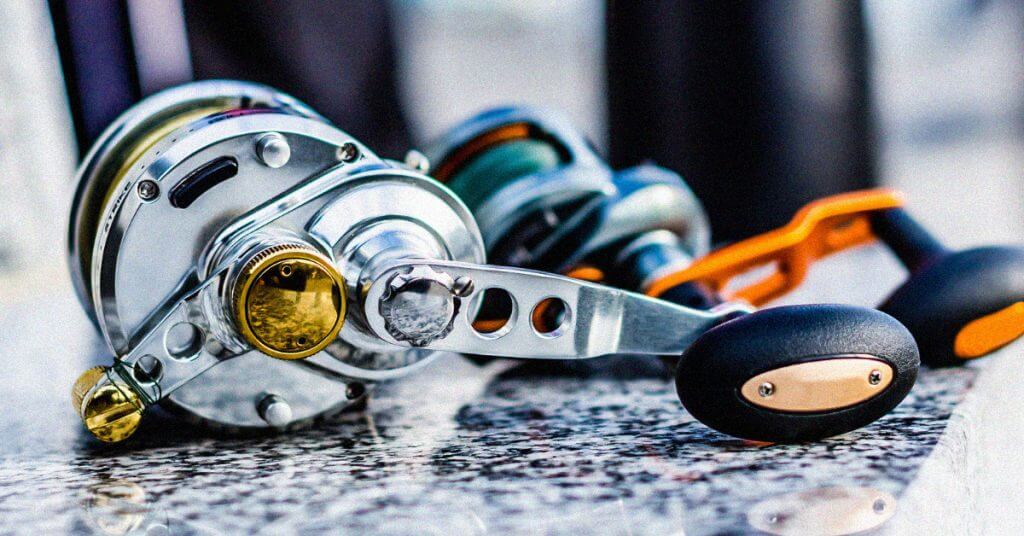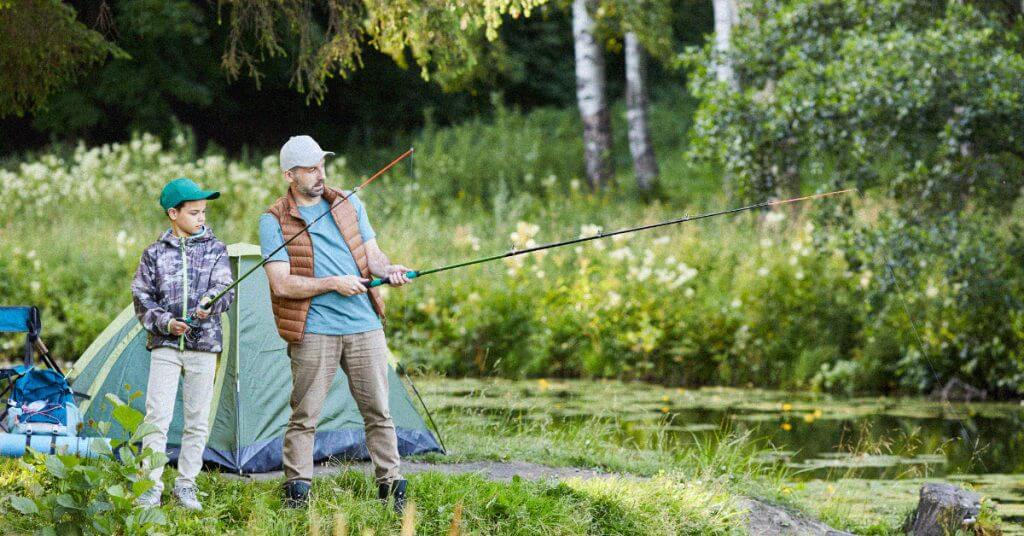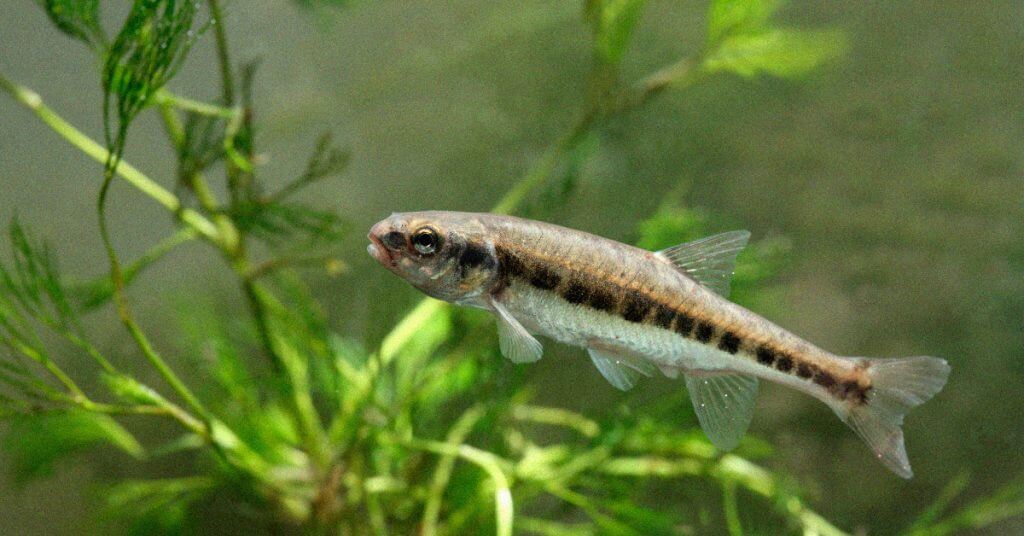Fall bass fishing takes a little patience, a little skill, and a willingness to do things differently than what you’re used to.
When the temperature dips down, the bass slow down, and their habits change – it’s important that you know how to respond.
Using decades of experience paired with plenty of research, I’ve compiled this expert guide explaining everything you need to know about catching bass in the fall.
Let’s get into it.
Top Fall Bass Fishing Tips
If you’re planning on bass fishing in October, you’ll need a few fall bass fishing techniques to keep in your back pocket.
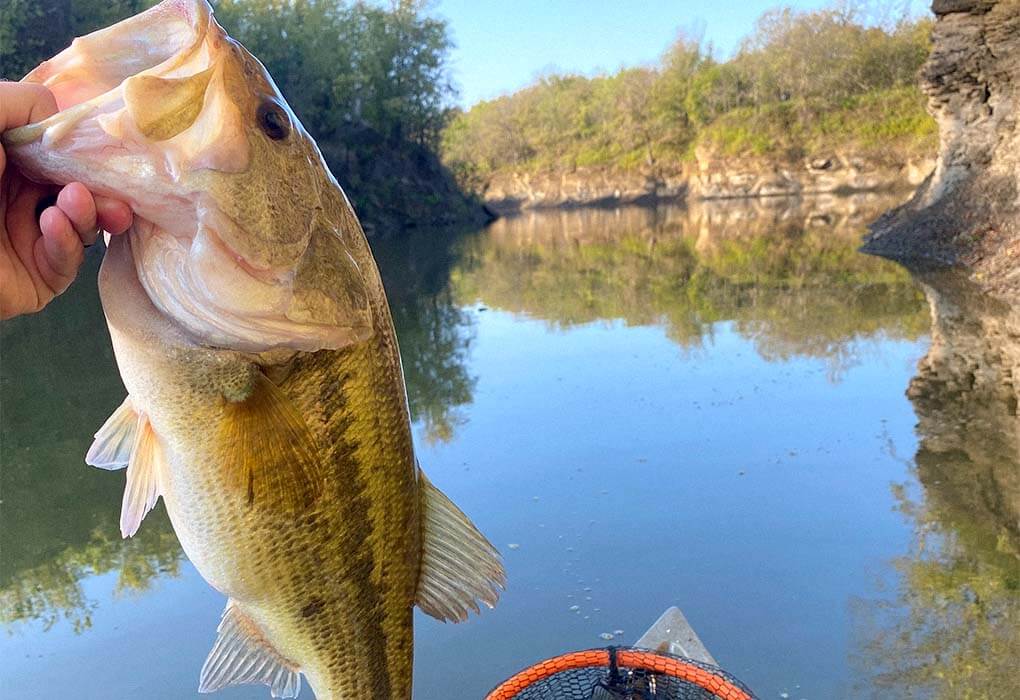
Photo taken by YourBassGuy.com’s author Wesley Littlefield from his kayak
Understanding The Weather
The first and most important thing you’ll want to understand about bass is that they’re warm-weather fish.
Their metabolism slows down when the water temperature drops, so their behaviors start to slow as well.
What this means for bass anglers is that you need to be mindful of their slower metabolism by slowing down your presentation, using smaller lures, and giving more time in between movements after cold fronts.
During the spring and especially early summer, hungry bass would likely chase your bait across the pond if you present it quickly or violently.
However during the late fall, when their metabolism slows down, they’re trying to conserve their energy and calories without burning too much, so they’ll wait for something easier to come along.
I use to discount it as a wives tale, but I’m now convinced the moon phase, barometric pressure, and sunshine play a big role in how bass behave day to day.
Cloudy days with a gentle breeze and low barometric pressure are generally better than sunny calm days with high barometric pressure.
This doesn’t mean you won’t be able to catch them on clear sunny days, but you should adjust your expectations accordingly.
Color Matters
If you’ve read any of my blog articles, you know I’m one of those anglers who has the same lure in 25 different colors in my tackle box.
That’s because I believe color is critically important to the success you have on the water during the fall.
Think about it this way.
If I told you that you were doing everything perfectly, but all you needed to change colors to catch all the bass in the lake, would you do it?
Of course, you would!
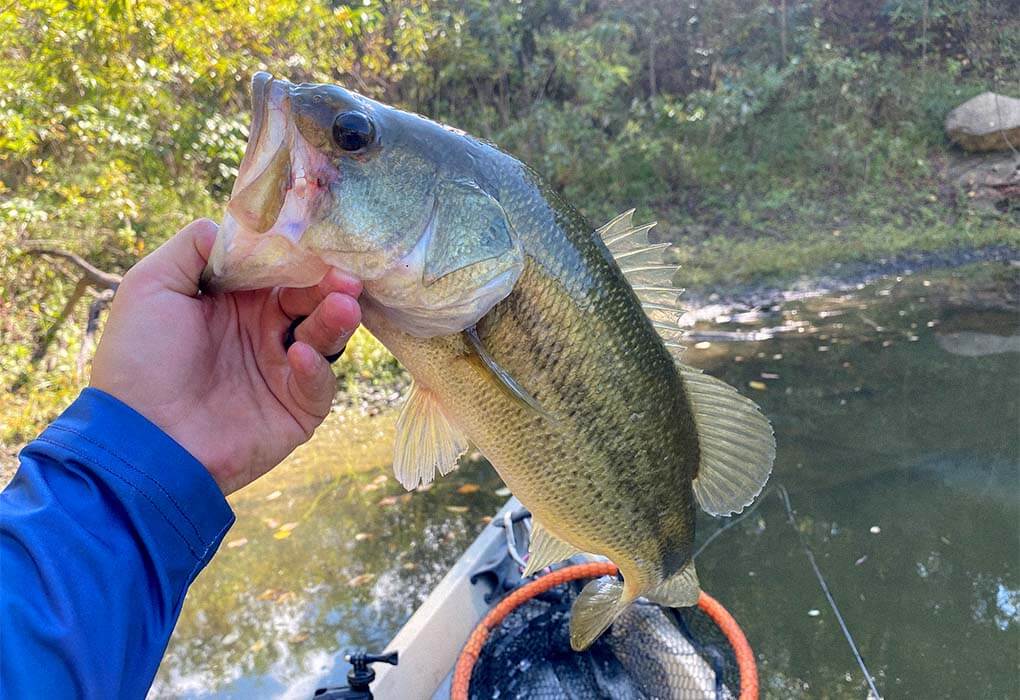
Photo by YourBassGuy.com’s author Wesley Littlefield while kayak bass fishing
The lures that you throw during the early fall are going to be slightly different than those in the late fall.
You need to cater to your environment to give yourself the best chance of catching the most bass, especially during the fall transition.
Look around, what colors do you see? Those are the colors you want to use.
During the early spring, crawfish-colored baits work the best, while during the summer, bright neon colors on your spinnerbaits are the best choice.
When it’s cloudy (which is common in the fall), you’ll want to use more neutral earthy colors. Water clarity should impact your color choice as well.
Doing this prevents the bass from getting spooked and gives you a better chance of catching more.
Where to Fish in the Fall
The next tip I have is to look into the best locations.
During the summer, you can find bass almost anywhere in the water but especially near grassy areas, stumps, laydowns, and different structures.
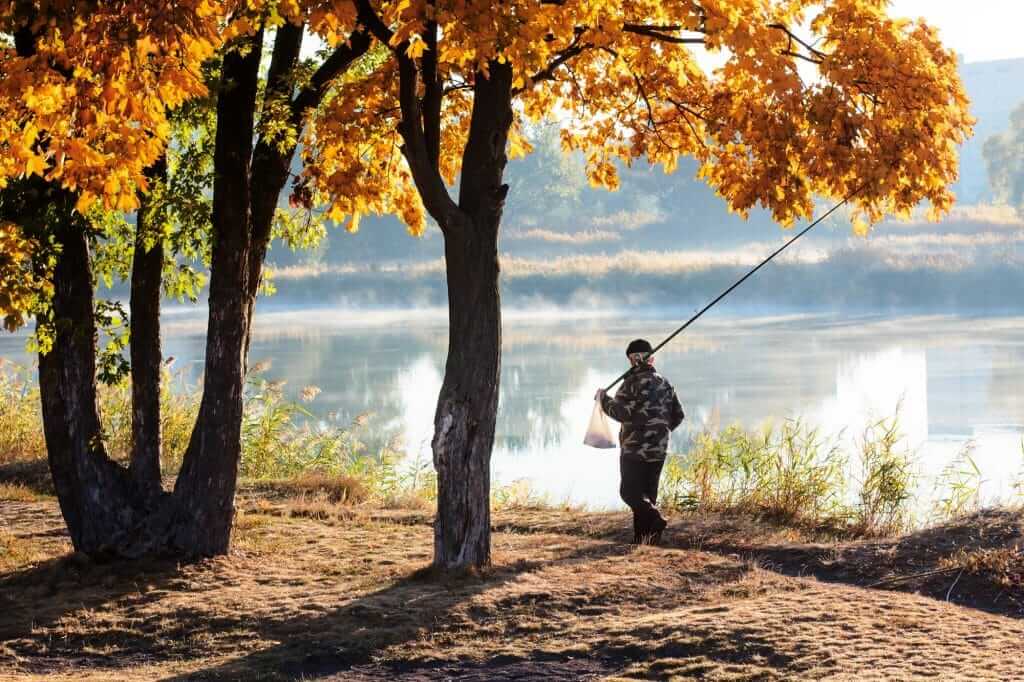
A similar rule applies, but the main difference is that you’ll find the more commonly hiding out along the shoreline of coves.
Bass are going to start hugging the shores and especially where creek channels are pouring into larger bodies of water.
This is a time of year when bass are trying to feed as much as possible because they’re bulking up for the cold weather.
They’ll spend a lot of time at tributaries because small bait fish like shad and shiners will move down the river and into the larger water.
A good rule of thumb is to follow the bait fish.
If you find an area where there are lots of little fish then the bigger fish are likely close by waiting for an opportunity to feed.
The bait fish will generally be in shallow areas searching for food.
The shallow water warms quicker during the shorter fall days which is another reason why so many fish are found on shallow flats.
Fall Techniques For Deeper Waters

One interesting bit of information that I’ve learned from a lot of different anglers over the years is that you can still fish deep water during the fall.
In fact, you stand a better chance of catching something big now than you did before.
Here’s why…
During the summer, small 1-3 pound bass are hanging out all over the place.
They’re in the deep, they’re in the shallow, they’re everywhere.
Once the weather starts to change, and the temperature starts to dip, they move closer to shore into the shallow water.
The big fish stay where they are because they’re still feeding on larger baitfish out there.
As a result, you can go straight for the big bass because the small bass and bluegill won’t be around in the clear water.
If you’re fishing with this strategy in mind, you want to change everything completely:
- Go with a larger lure (to scare off any smaller bass)
- Stay away from squarebill cranks
- Upsize your jigs
- Still present, it slowly
- Fish around structure
Here is where you really want to look for things like downed logs or underwater debris.
Having the best fish finder is really helpful for this as well.
Expert Fall Bass Tactics
Here are some of my most popular tips, whether it’s for smallmouth bass or largemouth bass.
Hook Up
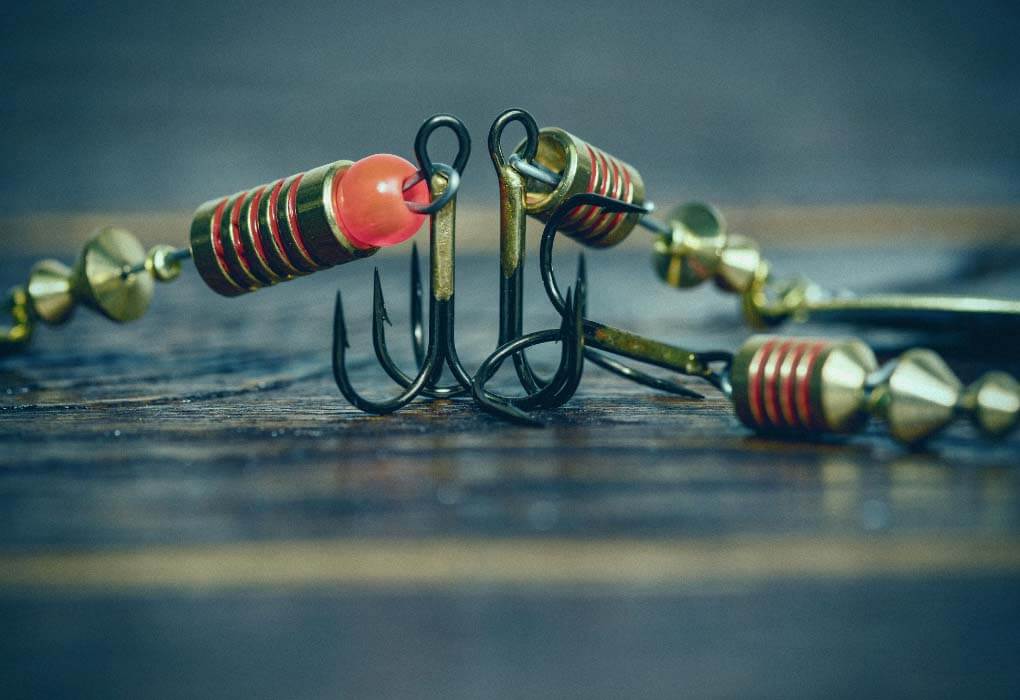
I’ve talked with a lot of anglers who say their biggest fall fishing problem is getting a proper hook set.
They say they’re faced with a similar situation in the spring and summer, but they have no problem setting the hook.
Once fall rolls around, they find that bass are a little timider about biting, and that makes it harder to set the hook.
My tip here is one of three things.
The first thing I would do is increase the size of your hook.
Don’t do it so much that it screws up your presentation, but maybe increase one size and see if that helps.
A larger hook will provide more surface area for you to set the hook.
My other tip is to go with soft plastics because they have some give, especially if you’re using a weedless lure.
If these two fail, I always fall back to throwing a bait with treble hooks because now you have three chances of hooking the fish instead of just one.
Pay Attention to Fall Bass Patterns
When you’re fishing outside of season, you need to be more vigilant and pay attention to everything that happens around you.
One of the best things you can pay attention to is how the bass are behaving with your presentation.
Something I like to do is talk to other anglers on the water.
Don’t be afraid to cruise right up and ask them what they’ve been using and how it’s been working for them.
Most people love to talk fishing, and they’ll be more than open to telling you.
Keep that in mind and change up your presentation frequently.
If you’re getting a lot of nibbles, but nothing is hooking up, it could be your hook like I said previously.
If you’re not seeing any action at all, it likely means your presentation isn’t lining up with what the bass are expecting, or your lure is too big for the time of year.
Take a Medium Action Rod
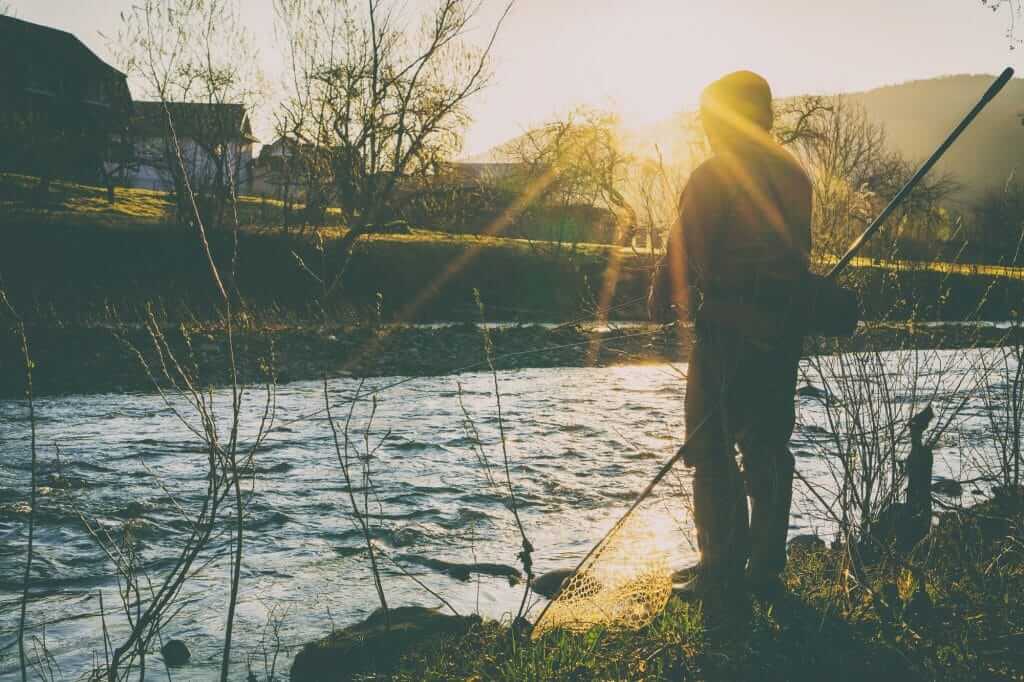
You don’t want to use a fast action rod because every little movement you make will move the bait around, and that doesn’t always provide the most natural appearance for what you’re trying to do.
On the other hand, you don’t want a slow-action rod because bass are a little timid right now, so you need to feel every little nibble.
If the rod blank bends too far down, you won’t be able to feel those nibbles.
Fall Lures
Now let’s talk about the specific bass fishing lures you’ll want to use. I’ve introduced a few so far, and you’ll see them come up again here.
- Lipless Crankbaits
- Shallow Jerkbaits
- Large Swimbaits
Bass are very aggressive this time of year which is why I recommend using moving baits like a buzzbait, spinner, or crankbait.
When the bite slows down don’t be afraid to mix some soft plastics into your fall bass fishing lures.
I tend to get excited and fish too fast so soft plastics force me to slow down, which results in more bites, even when the bass aren’t actively feeding.
Sometimes the key to getting a bite is standing out a little from the other food options that bass have which could mean offering a different size, color, or shape of bait.
Fall Bass Fishing FAQs
Where do bass go during the fall?
During the fall bass go to creek channels and shallow coves. This is because their biggest food source, baitfish, such as schools of shad and sunfish move to shallow water.
Bass follow the food as they bulk up for winter when food is less abundant and their metabolism slows down.
Do bass go deep or shallow in fall?
Bass go shallow during the fall season.
As fall begins, the fish that were deep around ledges during the heat of the summer will begin to move shallow as their food source moves shallow.
What is the best bass bait in fall?
The best bass bait in the fall is a buzzbait, crankbait, jerkbait, spinnerbait, or anything that mimics bait fish. Specifically shad and bluegill.
Final Thoughts
Fall bass fishing is a great opportunity for you to get out on the water when a lot of other anglers have likely packed it in.
This fall, don’t be so quick to put away your gear and winterize your boat – there’s still plenty of fishing left out there.

